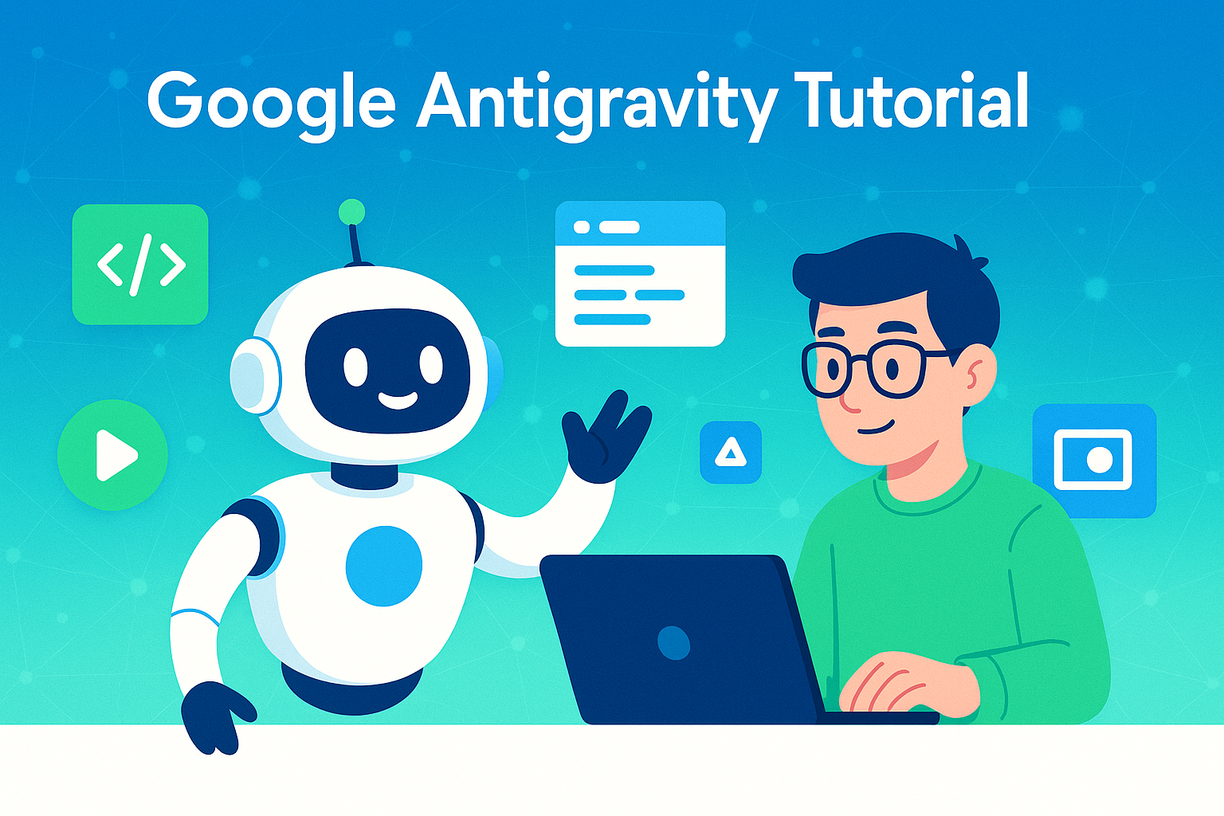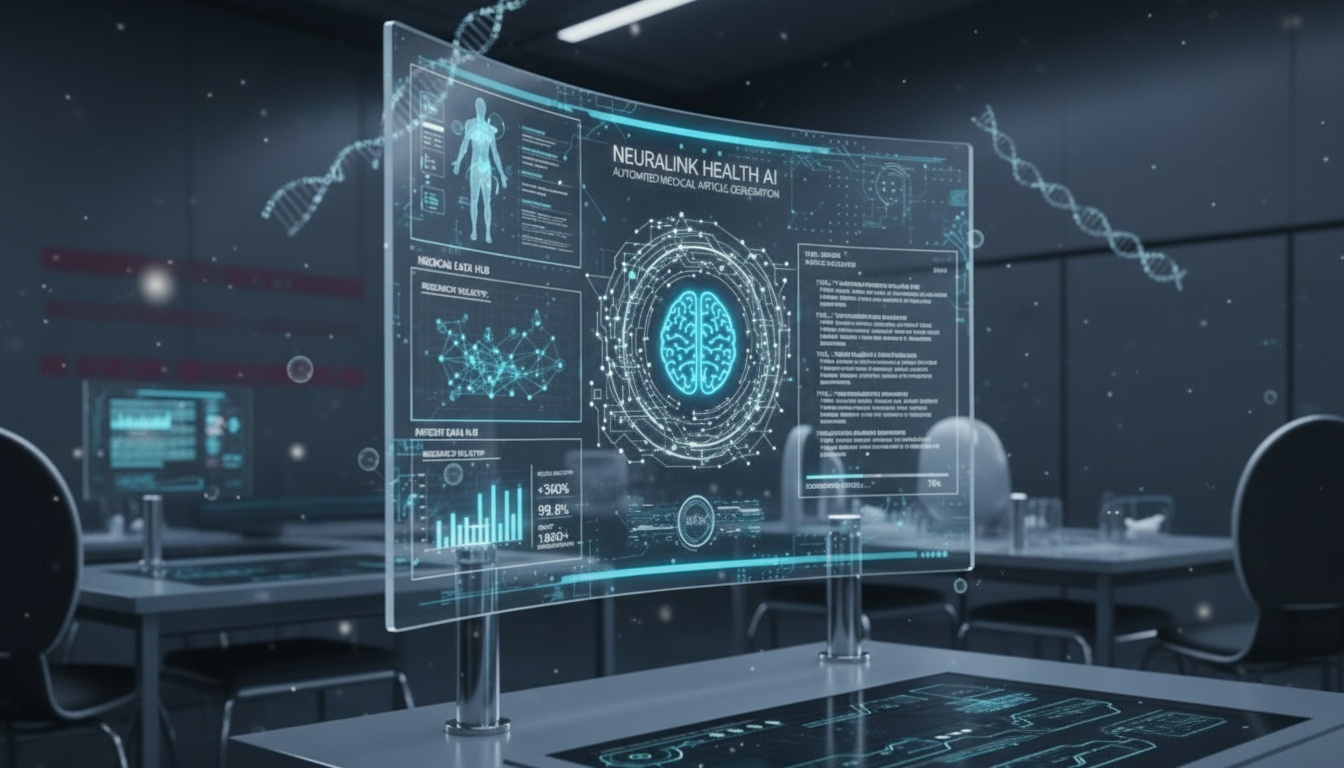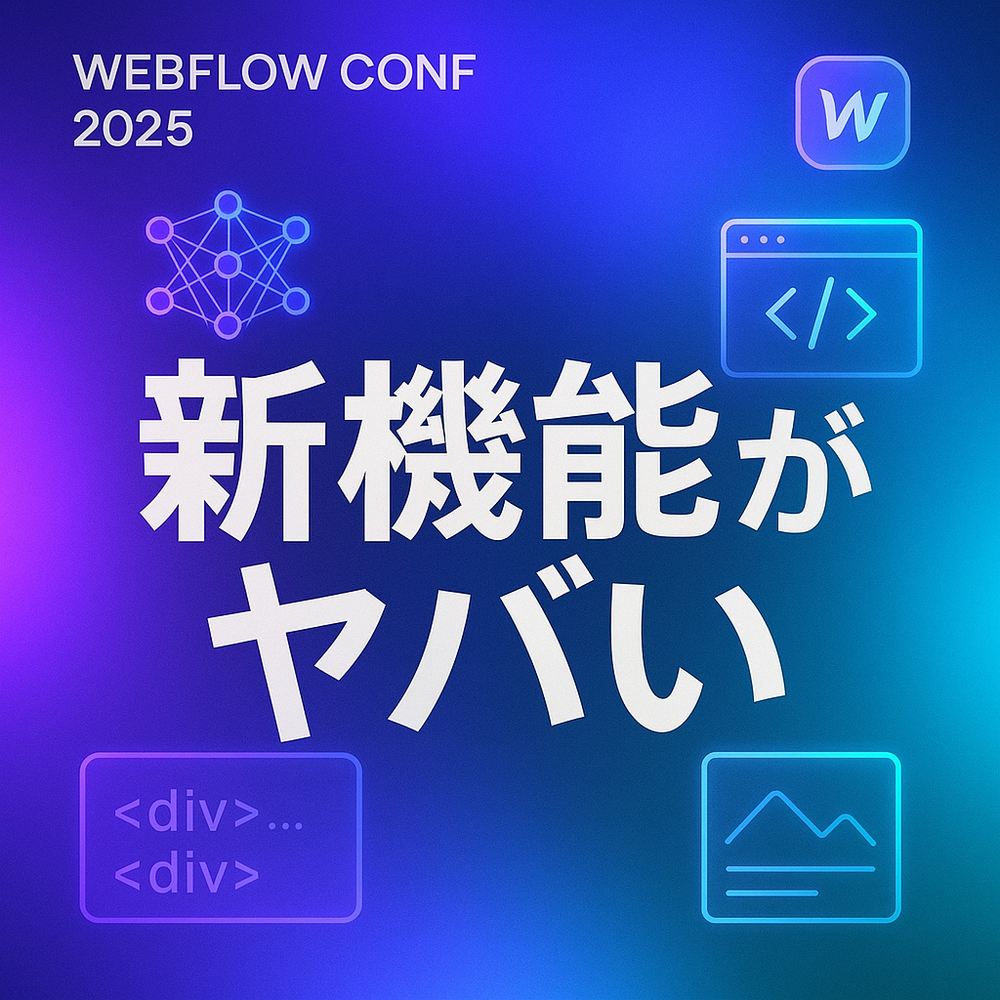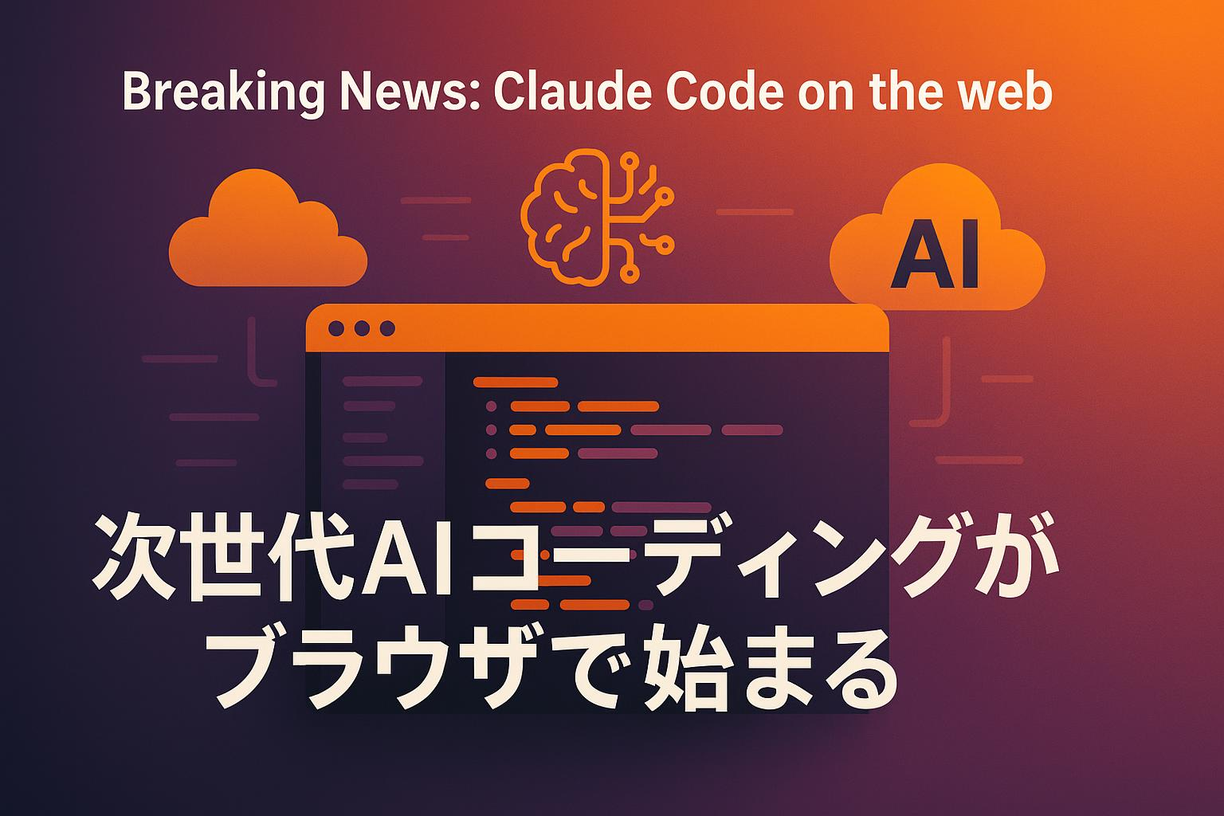beginning
“MCP Toolbox for Databases” announced by Google in July 2025 is a revolutionary open source tool that enables AI agents to safely and efficiently access corporate databases. This tool is based on a new standard called “Model Context Protocol (MCP)” advocated by Anthropic, and makes it possible to connect AI systems and data sources in a standardized way.
Conventionally, complex programming was required for AI to use database information, but by using MCP Toolbox for Databases, developers can now link AI agents and databases more easily and securely. This article is easy to understand, even for non-engineers, and explains in detail how it is structured, how to use it, and the benefits it brings to everyday work.
1. What is MCP Toolbox for Databases

MCP Toolbox for Databases (formerly Gen AI Toolbox for Databases) is an innovative open source tool announced by Google in April 2025 [1]. This tool acts like an “interpreter” to enable AI agents to securely and efficiently access corporate databases.
Conventionally, in order for AI to use database information, complex programming knowledge and time-consuming development work were required. Developers faced many technical challenges, such as setting up connections to databases, managing credentials, security measures, and error handling. However, by using MCP Toolbox for Databases, these complex tasks are greatly simplified, making it incredibly easy to link AI agents with databases.

The most important feature of this tool is that it is based on a new standard called “Model Context Protocol (MCP)” advocated by Anthropic [2]. MCP is an open protocol for connecting AI systems to external data sources in a standardized way, providing a unified approach to replace traditional disparate integration methods. This allows developers to set up the MCP Toolbox once and access the same database from various AI agent frameworks.
MCP Toolbox for Databases is a popular project that is completely open source and has received over 3,900 stars on GitHub [3]. This shows that many developers have recognized the value of this tool and are actually utilizing it. Also, since it is open source, contributions from the community are active, and support for third-party databases such as Neo4j and dGraph has also been added.
Key challenges that MCP Toolbox addresses
Modern enterprises store vast amounts of critical data in databases, such as customer information, sales data, inventory information, and financial data. This data is essential for corporate decision-making and business improvement, but there have been many technical barriers in the past for AI agents to access and utilize this data.
MCP Toolbox for Databases solves the following challenges:
Simplifying complex connection setups: Traditionally, each database had its own connection method, which developers had to learn and implement individually. MCP Toolbox masks this complexity by providing a unified interface.
Improved security: Corporate databases contain sensitive information, so a high level of security is required. MCP Toolbox integrates industry-standard authentication technologies such as OAuth2 and OIDC to enable secure access.
Reduced development time: There is no need to write boilerplate database connection code, and developers can focus on the core logic of AI agents. This can significantly reduce development time.
Automated error handling: Handling errors that tend to occur with database connections is automated, and more stable applications can be built.
Wide range of supported databases

One of the major attractions of MCP Toolbox for Databases is that it supports a wide range of databases. We provide comprehensive support not only for managed database services provided by Google Cloud, but also for general databases operated on-premise.
Google Cloud databases:
• alloyDB for PostgreSQL (includes AlloyDB Omni)
•Cloud Spanner
•Cloud SQL for PostgreSQL
•Cloud SQL for MySQL
•Cloud SQL for SQL Server
•Bigtable
Open Source Self-Managed Databases:
•PostgreSQL
•MySQL
Third-party databases:
• Neo4j (graph database)
• Dgraph (distributed graph database)
With this wide range of support, enterprises can realize cooperation with AI agents without changing the existing database environment. In particular, since it is compatible with PostgreSQL and MySQL, which are used by many companies, the hurdles for introduction have been drastically lowered.
2. The importance of linking AI agents with databases
In today's business environment, data has become such a valuable asset that it is called the “new oil.” Customer information, sales data, inventory information, financial data, etc. that companies accumulate on a daily basis are important elements that create competitive advantage by utilizing them appropriately. However, simply storing this data in a database does not demonstrate its true value.
The ability for AI agents to access databases will bring about revolutionary changes such as:
2-1. Realization of real-time decision making
Traditionally, it took a lot of manual work and time to obtain information from databases, analyze it, and use it for decision making. It was not uncommon for database administrators to execute queries, output results to Excel files, analysts create graphs and tables, and finally report back to management.
Once AI agents have direct access to the database, this process will be dramatically shortened. For example, in response to the question “How much has this month's sales changed compared to the same month last year”, AI agents can instantaneously obtain the latest information from a database and provide analysis results. This makes it possible to respond quickly to market changes and adjust strategies faster than competitors.
2-2. Provision of personalized services
Modern consumers expect services that are tailored to their needs. By being able to access the database, AI agents can immediately analyze each customer's purchase history, behavior patterns, preferences, etc., and propose optimal products and services.
For example, a customer support chatbot on an EC site can reference a customer's past purchase history and browsing history in real time, and make personalized suggestions such as “Product B, which is compatible with product A you previously purchased, has arrived.” This is not just an automated response; it provides valuable information based on data.
2-3. Automate and improve the efficiency of business processes
In many companies, operations utilizing database information, such as regular report creation, inventory management, and customer support, are carried out on a daily basis. There is a possibility that many of these tasks can be automated based on rules, but in the past, system development was expensive and time consuming, so they were often performed by hand.
By linking AI agents with databases, these business processes can be easily automated. For example, it is possible to automatically detect products whose inventory level falls below a certain threshold, start the ordering process, obtain relevant information from a database according to the details of customer inquiries, and generate appropriate responses.
2-4. Fostering a data-driven culture
The ability of AI agents to access databases fosters a culture of utilizing data throughout the organization. Conventionally, only a limited number of engineers can access database information, but by using AI agents, even non-engineers can ask questions to the database in natural language and obtain necessary information.
Thus, sales personnel can analyze customer purchasing patterns, marketers immediately measure campaign effects, and personnel personnel analyze employee satisfaction data, and personnel personnel can directly utilize data to improve operations.
3. MCP Toolbox for Databases components

MCP Toolbox for Databases acts as a middle layer between AI agents and databases, and consists of several key components. These elements work together to achieve secure and efficient data access.
3-1. Simplifying database connections
Connecting to a database has always been one of the most complex and time-consuming tasks. Each database had its own connection protocol, authentication method, and configuration parameters, and developers had to learn and implement each individually. Furthermore, time was spent on many “routine tasks” that were not essential, such as managing connection pools, handling timeouts, and error handling.
MCP Toolbox for Databases abstracts these complexities and provides a unified interface. Developers can entrust all complex connection processing to the toolbox by simply describing basic database information in a simple YAML configuration file (tools.yaml).
sources:
my-pg-source:
kind: postgres
host: 127.0.0.1
port: 5432
database: company_db
user: app_user
password: secure_passwordSimply create this configuration file and the connection to the PostgreSQL database is complete. MCP Toolbox automatically performs connection pool optimization, automatic reconnection, error handling, etc., so developers can focus on developing AI agent functions without being aware of detailed database implementation.
Also, MCP Toolbox supports a dynamic reload function as standard, and changes to the configuration file automatically reflect the new settings. This makes it possible to change settings during development or adjust settings in a production environment without stopping the service.
3-2. Database manipulation as a tool
One of the innovative features of MCP Toolbox for Databases is that operations on databases are defined as “tools” and can be invoked by AI agents. This is a very different approach from how traditional SQL statements are executed directly.
The benefits of a tool-based approach include:
Improved safety: By limiting the operations that AI agents can perform to pre-defined tools, it is possible to prevent unintended dangerous operations (such as deleting data or unauthorized access to confidential information).
Ensure reusability: Once defined, tools can be reused across multiple AI agents. For example, if you define a “tool to search for customer information,” it can be used for various purposes such as customer support agents, sales support agents, marketing analysis agents, etc.
Implementation of parameterization: Input parameters can be defined for tools, and AI agents can dynamically specify values to execute the tool. This enables flexible and universal data access.
Examples of specific tool definitions:
tools:
search-customers-by-name:
kind: postgres-sql
source: my-pg-source
description: 顧客名で顧客情報を検索します
parameters:
- name: customer_name
type: string
description: 検索する顧客の名前
statement: |
SELECT customer_id, name, email, phone, registration_date
FROM customers
WHERE name ILIKE '%' || $1 || '%'
ORDER BY registration_date DESC;This example defines a tool to search for customer names with partial matches. When AI agents receive natural language instructions to “tell me information about a customer named Mr. Tanaka,” they can call this tool and obtain appropriate results.
3-3. Enhanced security and surveillance

Corporate databases store extremely sensitive information such as customer personal information, financial data, and trade secrets. AI agents require the highest level of security when accessing this data.
MCP Toolbox for Databases provides the following multi-layered security features:
Authentication by OAuth2 and OIDC: A strong authentication system has been realized by integrating OAuth2 (Open Authorization 2.0), which is an industry-standard authentication protocol, and OIDC (OpenID Connect). As a result, AI agents must be authenticated as users with appropriate permissions when accessing the database.
Fine-grained access control: A tool-based approach gives you granular control over what operations AI agents can perform. For example, role-based access control is possible, such as giving customer support agents only permission to view customer information and granting administrative agents permission to update them.
Data masking and filtering: Provides the ability to automatically mask sensitive data (credit card numbers, social security numbers, etc.) and filter data based on specific criteria.
Automated audit log generation: All database access is logged in detail and can be audited and analyzed later. This will meet compliance requirements and assist in investigating security incidents.
Comprehensive monitoring with OpenTelemetry: Integration with OpenTelemetry enables detailed monitoring of AI agents' database access performance, error rates, response times, etc. This allows us to stay on top of the system's health and respond quickly when issues occur.
3-4. Support for various databases
It's common for modern enterprises to use multiple different databases for different purposes. For example, PostgreSQL is used properly for transaction processing, BigQuery for analytical processing, and Neo4j for graph analysis.
MCP Toolbox for Databases supports a wide range of databases to support this diverse database environment:
Relational databases: Comprehensive support for the most commonly used relational databases, such as PostgreSQL, MySQL, and SQL Server. These databases are widely used in enterprise core systems and store important data such as customer information, order data, and inventory information.
Cloud Native Databases: It also supports managed database services optimized for cloud environments, such as Google Cloud's AlloyDB, Spanner, and Cloud SQL. These services provide high availability, automatic scaling, backup capabilities, and more to help enterprises digitally transform.
NoSQL databases: NoSQL databases suitable for large-scale data processing such as BigTable are also supported, and can also be used in applications that handle large amounts of data such as IoT data and time series data.
Graph databases: It is also compatible with graph databases such as Neo4j and dGraph, and can also be used in applications dealing with complex relationships such as social network analysis, recommendation systems, and fraud detection.
This diversity allows enterprises to collaborate with AI agents without changing the existing database environment. Also, even if new databases are introduced in the future, they can be accessed by AI agents in a consistent manner through MCP Toolbox's unified interface.
4. Specific flow of AI agent construction
The process of building AI agents using MCP Toolbox for Databases has been greatly simplified compared to traditional complex development procedures. Here, the actual construction procedure is explained step by step, and the meaning and importance of each step is explained in detail so that even non-engineers can understand it.
4-1. Preparing the database
The first step in building an AI agent is preparing a database to be accessed. This stage clarifies what information you want to provide to AI agents and makes sure the required data is properly organized.
Designing the data structure: First, design the structure of the data that the AI agent will utilize. For example, when building a customer support agent, tables such as customer tables (customer ID, name, contact information, registration date, etc.), order tables (order ID, customer ID, product, order date, status, etc.), and product tables (product ID, product name, price, inventory number, etc.) are required.
Sample data input: Prepare sample data close to actual data for development and testing. This makes it possible to confirm the operation of the AI agent in advance and verify whether the expected results can be obtained.
Set access rights: From a security perspective, create a dedicated database user for AI agents and grant only the minimum required permissions. For example, only SELECT privileges are granted to read-only agents, and INSERT and UPDATE permissions are also granted to agents with update capabilities.
4-2. Installing and Configuring MCP Toolbox
Next, install MCP Toolbox for Databases and set up a connection to the database. This process is extremely simple compared to traditional complex configuration tasks.
Choose an installation method: MCP Toolbox offers multiple installation methods:
•Downloading binary files: The easiest way is to simply download the executable file from the GitHub release page.
•Using Docker containers: If you prefer to operate in a container environment, you can use pre-built Docker images.
•Compiling from source code: If customizations are needed, you can compile from source code in the Go language development environment.
Create a configuration file: Create a configuration file called tools.yaml and describe the database connection information and tool definitions. This configuration file acts like a “blueprint” for functions that AI agents can use.
# データベース接続設定
sources:
customer-db:
kind: postgres
host: localhost
port: 5432
database: customer_support_db
user: ai_agent_user
password: ${DB_PASSWORD} # 環境変数から取得
# AIエージェントが使用できるツール定義
tools:
get-customer-info:
kind: postgres-sql
source: customer-db
description: 顧客IDまたは名前で顧客情報を検索
parameters:
- name: search_term
type: string
description: 顧客IDまたは顧客名
statement: |
SELECT customer_id, name, email, phone, registration_date
FROM customers
WHERE customer_id = $1 OR name ILIKE '%' || $1 || '%'
get-order-status:
kind: postgres-sql
source: customer-db
description: 注文IDで注文状況を確認
parameters:
- name: order_id
type: string
description: 注文ID
statement: |
SELECT o.order_id, o.order_date, o.status, o.total_amount,
c.name as customer_name, c.email
FROM orders o
JOIN customers c ON o.customer_id = c.customer_id
WHERE o.order_id = $1With this setting, the AI agent will have two basic functions: searching for customer information and confirming order status.
4-3. Running the MCP Toolbox server
Once the configuration files are ready, start the MCP Toolbox server. This server acts as an “interpreter” between AI agents and databases, translating requests from AI agents into appropriate database queries and executing them.
./toolbox --tools-file "tools.yaml"If the server starts successfully, you'll see output similar to the following:
2025/07/09 10:00:00 INFO MCP Toolbox for Databases starting
2025/07/09 10:00:00 INFO Loaded 2 tools from configuration
2025/07/09 10:00:00 INFO Database connection established: customer-db
2025/07/09 10:00:00 INFO Server listening on http://127.0.0.1:5000
2025/07/09 10:00:00 INFO Ready to accept MCP connectionsAt this point, MCP Toolbox is waiting for a connection from an AI agent on the specified port (5000 by default).
4-4. AI agent development and collaboration
Finally, we'll develop an actual AI agent and link it with MCP Toolbox. If you use Google's Agent Development Kit (ADK), you can build AI agents with surprisingly little code.
Example agent development using ADK:
from google.cloud import adk
from toolbox_core import ToolboxClient
# MCP Toolboxクライアントの初期化
toolbox_client = ToolboxClient("http://127.0.0.1:5000")
# AIエージェントの定義
@adk.agent
class CustomerSupportAgent:
def __init__(self):
self.tools = toolbox_client.load_toolset("customer-support")
@adk.intent("顧客情報の確認")
async def handle_customer_inquiry(self, message: str):
# 自然言語から顧客IDや名前を抽出
search_term = self.extract_customer_identifier(message)
# MCP Toolboxのツールを使用して顧客情報を取得
customer_info = await self.tools.get_customer_info(search_term)
# 結果を自然言語で返答
return self.format_customer_response(customer_info)
@adk.intent("注文状況の確認")
async def handle_order_inquiry(self, message: str):
# 注文IDを抽出
order_id = self.extract_order_id(message)
# 注文情報を取得
order_info = await self.tools.get_order_status(order_id)
# 結果を整形して返答
return self.format_order_response(order_info)
# エージェントの起動
agent = CustomerSupportAgent()
adk.serve(agent, port=8080)Although this code is less than 100 lines, it has realized an AI agent with practical functions such as confirming customer information and confirming order status.
Integration with other frameworks: Since MCP Toolbox uses standard MCP protocols, it can also be used by AI agent frameworks other than ADK. For example, it can be easily integrated with popular frameworks such as LangGraph and LangChain.
5. Advantages of improving the efficiency of daily work
Leveraging MCP Toolbox for Databases will revolutionize the day-to-day operations of companies. Here, we will explain in detail what kind of efficiency improvements can be achieved while taking specific business scenes as examples.
5-1. Automate and speed up data searches

In conventional customer support operations, in order to respond to customer inquiries, support personnel needed to log in to multiple systems and manually search for customer IDs, order numbers, product information, etc. This process took an average of 5-10 minutes, and often made customers wait.
AI agents leveraging MCP Toolbox for Databases will dramatically improve this situation:
Instant information acquisition: When a customer asks “Tell me the delivery status of order number 12345,” the AI agent can immediately obtain relevant information from the database and provide specific answers such as “Order 12345 was shipped this morning and is scheduled to be delivered tomorrow afternoon.”
Realization of complex searches: The AI agent automatically constructs and executes searches with complex conditions such as “tell me the contact information of a customer named Tanaka-san who purchased iPhone-related products last month.”
Multilingual support: With natural language processing capabilities, AI agents can respond to inquiries in multiple languages such as Japanese, English, and Chinese, greatly streamlining customer support operations for global companies.
24/7 response: Unlike human support personnel, AI agents don't require rest or sleep, and can always provide consistent quality support. This can simultaneously improve customer satisfaction and reduce labor costs.
5-2. Automate reporting and data analysis

For many companies, creating regular reports, such as monthly sales reports, inventory analysis reports, and customer behavior analysis reports, is an important task. Traditionally, these reporting challenges include:
Time-consuming manual tasks: A series of tasks, such as extracting data from databases, summarizing in Excel, creating graphs, and creating materials in PowerPoint, generally took days to weeks.
Risk of human error: There was a risk of human errors such as calculation mistakes and data mix-ups during manual calculation and transcription work.
Lack of realtime: Month-end and quarter-end reports didn't provide the real-time information needed to make quick decisions.
Leveraging MCP Toolbox for Databases addresses these challenges:
Fully automated report generation: AI agents automatically retrieve the latest data from the database according to a pre-defined schedule, perform analysis, and generate reports that are easy to understand visually. For example, a sales analysis report for the previous month is automatically created at 9:00 a.m. on the 1st of every month and distributed by email to stakeholders.
Real-time dashboard: “How are sales today?” In response to the question, the AI agent immediately analyzes the latest data and provides specific answers such as “Today's sales are 2.5 million yen, a 15% increase from the same day last year, and 95% of the target has been achieved.”
Customized analysis: The AI agent automatically extracts appropriate data for analysis requests under specific conditions, such as “analyzing cosmetics purchasing trends among women in their 20s in the Kanto region last month,” and presents analysis results in graphs and tables.
Implementation of predictive analysis: AI agents that have learned past data patterns also automatically perform predictive analysis such as “next month's sales forecast” and “products that are expected to run out of stock” to support proactive decision-making.
5-3. Automate and streamline business processes

Modern enterprises have many business processes based on database information, such as inventory management, order processing, and customer follow-up. Many of these processes are subject to automation because they are executed based on clear rules.
Automated inventory management: Traditionally, inventory level monitoring involves humans regularly checking the system and manually processing orders when they discover products that have run low in stock. AI agents using MCP Toolbox for Databases monitor inventory levels in real time and automatically detect products below pre-set thresholds. Furthermore, the optimal order volume can be calculated by considering historical sales data and seasonality, and the order process can be automatically initiated.
Automate customer follow-up: You can automate many tasks related to customer relationship management (CRM), such as satisfaction surveys for customers who have passed a certain period of time after purchase, special offers for birthday customers, and promotion of repurchases for customers who have not purchased for a long time. AI agents constantly monitor customer databases and send personalized messages at the right time.
Automated quality control: In manufacturing, it is important to analyze production data and quality inspection data in real time to detect signs of quality abnormalities early. AI agents can obtain sensor data and inspection results from databases, perform statistical analysis, and issue alerts before quality issues occur.
Automate financial processes: Financial-related tasks, such as managing accounts receivable, detecting late payments, and forecasting cash flows, are also subject to automation. AI agents can analyze transaction data and payment history, identify customers at high risk of late payments, and automatically update future cash flow forecasts.
5-4. Simplified development and improved security
Conventionally, building a system that links an AI agent with a database required advanced technical knowledge and a long development period. Many technical issues needed to be solved, such as implementing database connections, security measures, error handling, and performance optimization.
Implementing MCP Toolbox for Databases will greatly reduce these challenges:
Reduced development time: System development, which previously took months, will now be completed in weeks to days. Developers can focus on developing the core business logic of AI agents without spending time implementing detailed database connections.
Reduced technical hurdles: Even without complicated database programming knowledge, you can build a practical system by simply writing YAML configuration files and creating simple AI agent code. As a result, more people will be able to work on business improvements using AI.
Standardized security: Standard security features (OAuth2, OIDC, access control, etc.) provided by MCP Toolbox eliminate the need to implement individual security measures. This allows developers without security expertise to build systems that ensure enterprise-level security.
Improved maintainability: A unified architecture makes it easier to maintain and add features to the system. Adding new databases or modifying existing functions can often be handled simply by changing configuration files.
5-5. Accelerate decision making and improve quality
In today's business environment, markets change rapidly, and quick and accurate decisions determine competitive advantage. However, traditional decision-making processes took time to gather and analyze the necessary data, and opportunities were often missed.
Leveraging MCP Toolbox for Databases will revolutionize the decision-making process:
Decision making based on real-time data: Management asks “How are our results this quarter?” When asked, the AI agent immediately analyzes the latest data and provides comprehensive information on sales, profit, market share, customer satisfaction, etc. This avoids the risk of making decisions based on outdated data.
Automated scenario analysis: “What impact will a 10% reduction in the price of a new product have on sales?” Even for hypothetical scenarios such as these, AI agents analyze past data patterns and present prediction results. This enables strategic decisions with minimal risk.
Multifaceted analytical perspectives: AI agents simultaneously analyze multiple data sources, such as financial data, customer data, and market data, and support decision-making from multiple perspectives. For example, when analyzing “market potential in regions considering opening new stores,” we comprehensively evaluate demographics, competitive conditions, traffic access, regional economic indicators, etc.
Continuous learning and improvement: AI agents learn the results of past decisions and continuously improve prediction accuracy. This enables higher quality decision support over time.
6. Actual use cases and application scenarios
MCP Toolbox for Databases has actually been used in various industries and applications, and concrete results have been achieved. Here, we will introduce typical use cases and application scenarios, and explain in detail what kind of value has been created.
6-1. Automating customer support for e-commerce companies
A major e-commerce company introduced an AI customer support system using MCP Toolbox for Databases to respond to tens of thousands of monthly customer inquiries.
Pre-implementation issues:
• 80% of customer inquiries are routine details such as order status, delivery status, return procedures, etc.
• Support personnel must search for information across multiple systems, with an average response time of 8 minutes per case
• Inability to respond immediately to nighttime or holiday inquiries
• Inquiries are concentrated during peak periods and can take hours to days to respond
Solution using MCP Toolbox: Build an AI agent with integrated access to customer databases, order databases, inventory databases, and delivery databases. Customers make inquiries in natural language, and AI agents instantly provide the right information.
Results after implementation:
• Automate 95% of routine inquiries and reduced average response time from 8 minutes to 30 seconds
• Immediate 24/7 response increased customer satisfaction by 25%
• Support personnel can focus on solving complex issues, improving work efficiency by 40%
• 30% reduction in annual support costs
6-2. Quality Control and Preventive Maintenance in Manufacturing
Major auto parts manufacturers use MCP Toolbox for databases for quality control of production lines and preventive maintenance of equipment.
Pre-implementation issues:
• Production data, quality inspection data, and equipment operation data are distributed across separate systems
• Situations where quality issues are discovered ex post facto, and countermeasures are taken after a large number of defective products have occurred
• Production stops occur several times a month due to equipment failure
• Data analysis requires expertise and cannot be directly utilized by field workers
Solution using MCP Toolbox: Build an AI agent that integrates databases of manufacturing execution systems (MES), quality control systems, and equipment monitoring systems and analyzes them in real time. We have realized a system where field workers can ask questions in natural language and immediately obtain analysis results.
Results after implementation:
• Early detection of quality abnormalities reduces the occurrence rate of defective products by 60%
• Preventive maintenance reduced production outages due to equipment failure by 80%
• Field workers can directly utilize data analysis, and improvement proposals have increased by 3 times
• Overall production efficiency increased by 15%
6-3. Risk management and customer analysis at financial institutions
Regional banks have introduced MCP Toolbox for Databases to improve the efficiency of loan screening and customer service.
Pre-implementation issues:
• Information required for loan screening is distributed across multiple systems, requiring days to weeks for review
• Analyzing customer asset status and transaction history is manual and time-consuming
• Risk assessment criteria vary from person to person and are inconsistent
• Proposals to customers are uniform, making it difficult to provide services tailored to individual needs
Solution using MCP Toolbox: Build an AI agent that integrates customer information systems, transaction history systems, credit information systems, and market data systems to achieve comprehensive customer analysis and automated risk assessments.
Results after implementation:
• Reduced loan review time from an average of 5 days to 1 day
• Harmonized risk assessment standards improve review consistency
• Closing rate increased by 35% through personalized financial product proposals based on the customer's asset status
• Reduced risk of non-compliance by 70%
6-4. Inventory optimization and demand forecasting in retail
Retail chains operating nationwide use MCP Toolbox for Databases to optimize inventory management and improve the accuracy of demand forecasting.
Pre-implementation issues:
• Inventory management for each store is individually optimized, and overall optimization cannot be achieved
• Demand forecasting taking into account seasonality and regionality is difficult
• Disposal loss and opportunity loss due to excessive inventory occur simultaneously
• Determining the timing and quantity of new product introduction depends on experience
Solution using MCP Toolbox: Build an AI agent that integrates sales data, inventory data, weather data, event information, and competitive information from all stores to achieve high-accuracy demand forecasting and optimal inventory allocation.
Results after implementation:
• Demand forecasting accuracy improved from 85% to 95%
• 40% reduction in waste loss due to excess inventory
• 50% reduction in lost opportunities due to shortages
• Success rate for new products increased from 60% to 80%
• Overall profit margin improved by 12%
6-5. Patient management and clinical support in the healthcare industry
University hospitals have introduced MCP Toolbox for Databases to improve the efficiency of patient management and medical support.
Pre-implementation issues:
• Patient information distributed across multiple systems such as electronic medical records, testing systems, and drug management systems
• It takes time for doctors to gather the information needed for their practice
• Checking for drug interactions and side effects is manual and there is a risk of being overlooked
• Predicting patient prognoses and evaluating treatment effects depends on experience
Solution using MCP Toolbox: Build an AI agent that integrates an electronic medical record system, test result database, drug database, and medical literature database to support medical treatment. We have realized a system where doctors can ask questions in natural language and immediately obtain comprehensive patient information and medical support information.
Results after implementation:
• Clinic preparation time reduced from an average of 15 minutes to 5 minutes
• Increased accuracy of drug interaction checks and 80% reduction in risk of medical accidents
• Patient satisfaction increased by 20% due to improved diagnostic accuracy
• By reducing doctors' workload, it is possible to provide high-quality medical care to more patients
As can be seen from these examples, MCP Toolbox for Databases has contributed greatly to improving the efficiency and quality of operations utilizing databases, regardless of industry or application. In particular, by utilizing data distributed across multiple systems in an integrated manner and realising real-time decision support, it is possible to create value that was previously impossible.
7. summary
MCP Toolbox for Databases is a revolutionary tool that revolutionizes the integration of AI agents and databases and accelerates the digital transformation of enterprises. As we've discussed in detail in this article, this tool goes beyond just a technical solution and has the potential to transform an enterprise's entire business process.
Revisiting key value propositions
Eliminating technical complexity: Traditionally, linking AI agents with databases required advanced technical knowledge and a long development period. MCP Toolbox for Databases has drastically lowered this technical barrier, making it possible to build powerful AI agents by simply writing a simple configuration file.
Standardized security: Because corporate databases store highly sensitive information, the highest level of security is required. MCP Toolbox provides enterprise-level security features such as OAuth2, OIDC, fine-grained access control, and audit logs as standard to enable secure AI agent operation.
Wide database support: By supporting various databases used by enterprises, such as PostgreSQL, MySQL, AlloyDB, Spanner, and Neo4j, AI agents can be introduced without changing the existing IT environment.
Real-time business improvement: By automating data retrieval, automating report creation, and automating business processes, many tasks that were previously performed by hand are streamlined, and humans can focus on more creative and high-value tasks.
Future prospects and possibilities
MCP Toolbox for Databases is still an evolving technology, and further enhancements and improvements are expected in the future:
Cooperation with advances in AI technology: As the performance of large-scale language models (LLM) improves, it is expected that AI agents capable of more natural and advanced dialogue will be built. Also, with the development of multimodal AI, comprehensive data analysis including not only text but also images and sounds will be possible.
Integration with edge computing: Due to lightweight AI agent operation on IoT devices and edge servers, it is expected that the use of real-time performance in applications where real-time performance is more important will expand.
Development of industry-specific solutions: Specialized tool sets and templates will be developed to meet the specific requirements of each industry, such as healthcare, finance, and manufacturing.
Expanding the scope of automation: Currently, the focus is mainly on data retrieval and analysis, but it is expected that in the future, it will be possible to automate a wider range of business processes, such as data updates, collaboration between systems, and integration with external APIs.
Recommendations for companies considering implementation
For businesses considering implementing MCP Toolbox for Databases, we recommend the following:
Start small: By starting with a specific department or business process rather than a large-scale enterprise-wide implementation, you can demonstrate effectiveness while minimizing risk. For example, we recommend starting with automating some customer support tasks and regular reports.
Ensuring data quality: AI agents' performance is highly dependent on the quality of the data they access. Before implementation, it is important to work on organizing the database and improving data quality.
Security policy development: It is necessary to establish clear security policies in advance, such as the scope of data that AI agents can access, restrictions on operations that can be performed, and how to manage audit logs.
Continuous learning and improvement: AI agent performance improves through continuous learning and improvement once operations begin. Regular performance assessments and planned feature enhancements are key to success.
Organizational culture transformation: The introduction of AI agents is not just a technical change; it involves changes in the way organizations work and decision-making processes. It's important to pay due attention to employee education and change management.
MCP Toolbox for Databases is a powerful tool for businesses to harness the power of AI to transform into data-driven organizations. With proper planning and implementation, you'll be able to achieve significant improvements in operational efficiency, improved decision quality, and established competitive advantage. Now is the time to take advantage of this revolutionary technology and carve out the future of your enterprise.
Bibliography
[2] Anthropic. “Adopting the Model Context Protocol”.
[3] Google APIs. “genai-toolbox: MCP Toolbox for Databases is an open source MCP server for databases”.

















































